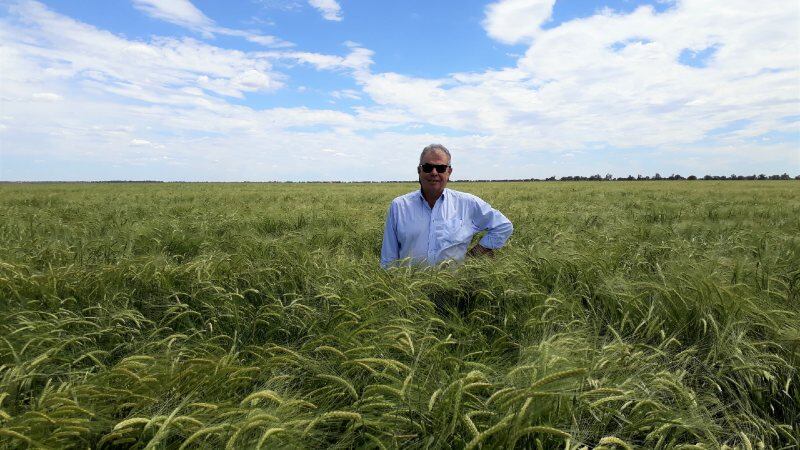The barley in the spotlight here has been named Kebari, and was developed by Australia’s national science agency Commonwealth Scientific and Industrial Research Organisation (CSIRO).
The Healthy Grain is a CSIRO spin-off, and holds the license to non-hulled Kebari, whereas hulled Kebari licensing remains with CSIRO and has already been used to make a gluten-free beer in Germany.
“The Kebari bred without husks/hulls, or what we call ‘naked’ Kebari, is the variant used for food production – it’s one of just a few unusual agricultural products that have been patented, and The Healthy Grain holds the license for the lifetime of this patent,” The Healthy Grain CEO Robert Burbury told FoodNavigator-Asia.
“Kebari is the world’s first gluten-free barley at 10,000 times less gluten than can be found in regular barley, at just 3ppm to 5ppm (parts per million) gluten. We’re seeing a rapid rise in demand for gluten-free products as people move away from gluten due to coeliac, allergies, sensitivities, perceived benefits and so on, so believe there is a massive market for product development here.”
The primary food manufacturing partners that Burbury said would most benefit from working with Kebari would be bakery firms, as the gluten-free barley can be used exactly the same way that regular barley is being used in making bread, biscuits, cookies, or other bakery items – but make the resulting products gluten-free.
“Many current gluten-free products tend to be tasteless and bland, but Kebari can be used just like you would use normal barley, and it tastes the same with the same natural sweetness that barley has, but the product would be gluten-free,” he said.
“I would hope to work with any big and mid-sized bread makers in the region first for sure - companies like Goodman Fielder and George Westin Foods would be [able to make bread gluten-free from the grain up] with Kebari.
“That’s not to say that non-bakery firms wouldn’t be able to utilise it though. Any company that makes breakfast cereals, muesli bars or any other food using barley and most grains would be able to make a gluten-free version using Kebari.”
In addition, the grain has been developed to contain higher levels of key nutrients such as iron, zinc, fibre and Vitamin B, which are often lacking in gluten-free diets, which will act as an additional marketing boost for the firm.
The Healthy Grain is currently already working on a B2B level with many big firms for its core product BARLEYMax, which was also CSIRO-developed to contain high levels of fibre, beta-glucans, protein and prebiotics, and believes that Kebari will also appeal to these firms.
“One of our traditional partners is Freedom Foods, and we also work with Scalzo Foods which in turn supplies most of the big food manufacturers for the non-bakery industry, as well as with MAURI ANZ for the bakery industry – and I see Kebari going down pretty much the same route,” said Burbury.
“At the moment, we’re still at the ‘growing’ and trials stage, as after CSIRO passed the first iteration of Kebari over to us we still had to bulk up the seed stock and are now trialling the grain in Victoria and also in Idaho in the United States to better understand the yield.
“When the yield levels stabilise and we are confident we can grow enough Kebari economically for partners, we will formally move into the commercialisation stage. So at this point I’d say we’re about two years away from commercial quantities to enter the market.”
‘Gluten-free’ vs ‘ultra-low gluten’
Kebari’s gluten content may be well-below the World Health Organization (WHO) gluten-free classification of 20ppm, but interestingly current Food Standards Australia New Zealand (FSANZ) regulations do not allow it to be classified as gluten-free in these countries.
“According to FSANZ, as long as the grain is from barley, wheat, oat or rye, it cannot be considered gluten-free regardless of how low the gluten content is,” Burbury told us.
“So while we’re able to be classified as gluten-free in the big markets such as North America and the EU, ironically we cannot do so here in Australia, so we call Kebari ‘ultra-low gluten’ here.
“So for now, there might actually be greater marketing potential in the US and EU due to the legislations, as ‘gluten-free’ still rolls off the tongue much better than ‘ultra-low-gluten’.”
That said, he expressed confidence that the consumer demand for both gluten-free and healthier foods would still put Kebari in good stead when it comes to commercialisation.
“There’s no slowing down the gluten-free trend, and Kebari is also able to tick the functional foods trend box with its inbuilt enhanced nutrient profile, so consumers can get the enhanced nutrients they need without gluten and in their regular daily diet without making any changes,” said Burbury.
He also highlighted that Kebari was developed using ‘traditional breeding techniques’ and was not a GM crop, so this was not a challenge for them.


